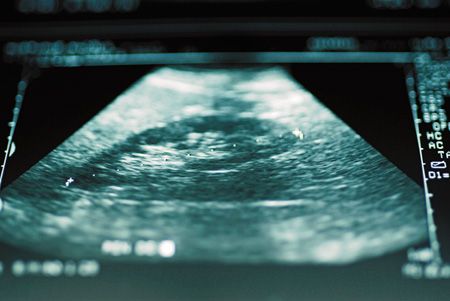Diagnostic update: When it comes to abdomens, radiography is out, ultrasonography is in
Michigan State veterinary radiologist offers four tips to gain as much info as possible when you peek at your patients innards.

Imagine peering through a keyhole. You see a section of the interior room, which provides some information. But you need to angle around with your eye to pick up on as much as you can. Anthony Pease, DVM, MS, DACVR, an associate professor at Michigan State University's College of Veterinary Medicine, uses the keyhole analogy for ultrasonography.
Pease says that at Michigan State University, ultrasonography has pretty much replaced radiography when examining the abdomen. “On a given day, we perform up to 20 ultrasonographic examinations and only three to five abdominal radiographic series,” says Pease. “Ultrasound provides better detail and more information about the abdomen compared with plain radiographs.”
So what are you waiting for? Go get your machine, and keep these four tips in mind.
1. Charge for your exams
In all likelihood, the first ultrasound machine in your practice is a hand-me-down you thought you'd just try your hand at. You're still experimenting with it, so you may be hesitant to charge for exams. But Pease says if you never charge, you'll never be able to afford a better machine. At first, charge just $5 or $10, and set aside that money each time to build up to a better machine.
2. Don't overdiagnose
“This looks weird.”
“Hey, what's that?”
The temptation when you first start using an ultrasound machine is to find abnormality in all places. “Inexperience and lack of confidence may lead to overzealous interpretation,” says Pease.
In fact, he says 80 percent of things you look at should be normal. And normal is good. But if you can catch those 20 percent of abnormalities earlier, you can intervene to prevent more dire disease. If you're unsure of your interpretation, use the magic of telemedicine to submit your images for review by an expert to get the correct diagnosis.
3. It's not pattern recognition
Speaking of the correct diagnosis, don't think that once you get comfortable interpreting ultrasonograms you'll be able to eventually make a diagnosis just by what you see. There is not a pattern for something that is benign or something that is lymphoma, Pease says. You have to collect an aspirate and examine it to see what you're truly looking at. Luckily, you can sample exactly what you need with ultrasonographic guidance.
4. Use your technicians
Don't have time in your busy schedule to master ultrasonography? A technician in your practice may be just the person to train to capture images for interpretation. Pease says in most states a technician can even do the ultrasound-guided aspirates if under the direct supervision of a veterinarian. So, let technicians take images while you see other patients. This will ultimately lead to increased revenue for the practice and potentially greater earnings for everyone involved.
Click here for more on imaging technicians and ultrasound advice from Dr. Pease.